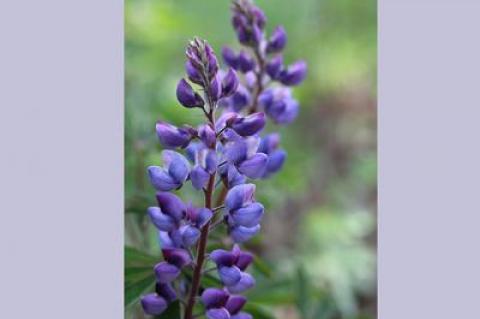As we go deeply into the autumn and the leaves fall at an ever-quickening pace, thoughts of the next spring gird us for the coming winter. We hope it will be as wonderful as the last and that the flowers and leaves will burst out with a vengeance, having slept long and deep through the cold and snow of winter.
Outdoors
It’s that time of year again when all of the local birds finish raising and weaning their second broods. The migrants among them have already flown south, and the year-round residents are out foraging and mapping the locations of all of the feeding stations in preparation for winter.
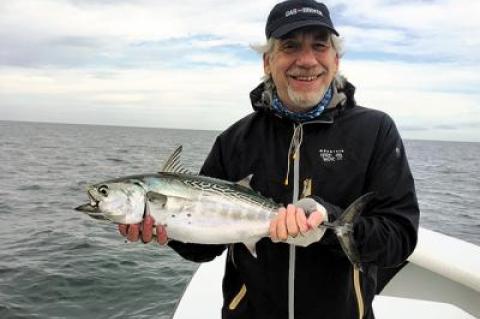 Don’t Get Stuck in the Sand
Don’t Get Stuck in the SandStriped bass and bluefish soon will begin their migration south and, we hope, come within surfcasting range. Fishermen hoping to bend a rod and others eager to observe the spectacle of birds diving, fish crashing bait, and rows of anglers launching lures into the surf will slowly roll their cars off the hard pavement into the soft sand.
I’m looking out my window at pines that are more brown than green. “Oh, darn, the dreaded pine beetle,” I say to myself. Driving around the roads today I saw lots of pines already gone and lots of others on the way out.
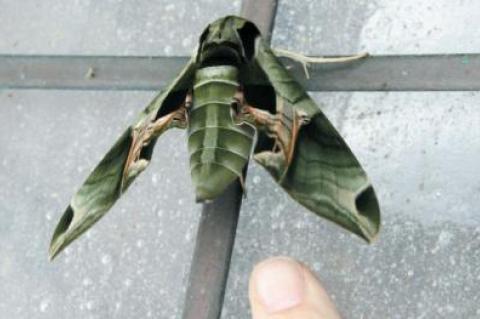 Nature Notes: A Thing of Beauty
Nature Notes: A Thing of BeautyIt’s that time of year again. Greens turn to yellows, reds, and oranges. Colorful birds flit from treetop to treetop, feeder to feeder. Gray squirrels and blue jays gather and sequester bronzy acorns. Azure skies sail overhead and morph into carmine-purple sunsets, then 7-to-7 uninterrupted black. Better to appreciate the harlequin days against a backdrop of lightless nights. Yes, it’s fall, and isn’t that grand?
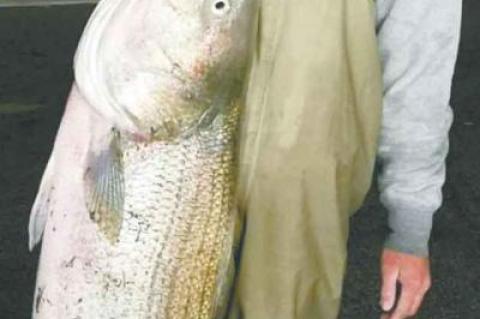 Out of the La-Z-Boy
Out of the La-Z-BoyWhile most East End fishermen wisely retreat to the comfort of home during a period of fierce northeast wind and rain, others pull on their waders, grab a stout surfcasting rod, and head toward the Point in search of big striped bass.
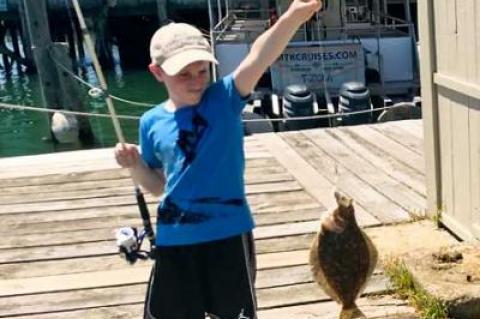 Catch a Record by the Tale
Catch a Record by the TaleA great number of striped bass over 40 pounds have been caught locally so far this season. Among these cow bass are several that weighed over 50 pounds, which for many serious anglers is the dividing line between a large and true trophy fish.
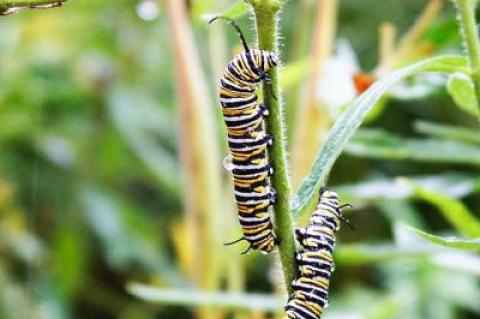 Nature Notes: The Flight of the Monarchs
Nature Notes: The Flight of the MonarchsIt’s the season for migrating monarch butterflies.
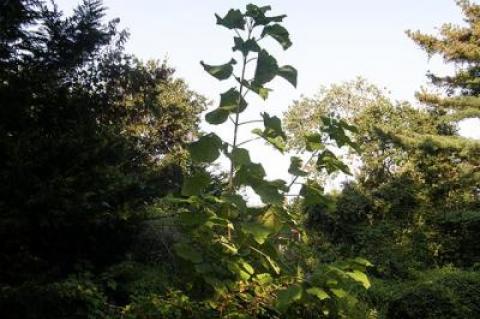 Nature Notes: Ready for Yesteryear
Nature Notes: Ready for YesteryearIn the 1940s almost every family on the North Fork had at least one dog and one cat. Many families kept a larger menagerie — pigs, chickens, goats, cows, and sometimes a horse or two. Horses were an extravagance; you couldn’t eat them nor did they give milk or lay eggs, and they were no longer needed to pull plows and other farm implements, having been replaced in the 1920s and 1930s by tractors.
America is making progress at bringing back lost species of flowers and plants, while simultaneously better protecting animal species that were most vulnerable. The gray wolf and grizzly bear, two species that were approaching extinction in the latter quarter of the 20th century, are now becoming so common in some areas that several states allow hunters to shoot them.
 Nature Notes: Chiggers or Not, the Itch Is Real
Nature Notes: Chiggers or Not, the Itch Is RealI led a nature walk at Shadmoor State Park for a nice couple from Amagansett who won the walk in the East Hampton Ladies Village Improvement Society auction held on July 30. Their son and a girlfriend, as well as another woman friend and her son, also accompanied us. I took my large white towel along and swept the vegetation on the sides of the trails as we marched on in the chance that I might find a tick or two. Shadmoor is well known for its large deer tick and Lone Star tick populations.
All animals of a species have culture. If we accept the notion that plants communicate with one another underground via mycorrhizal connections, plants also have culture. In evolution, not only does a species adapt to changing climes and competition by evolving adaptations — as a fish evolving lungs to become an amphibian — but a species also changes its behavior to keep up with quicker changes in its environment.
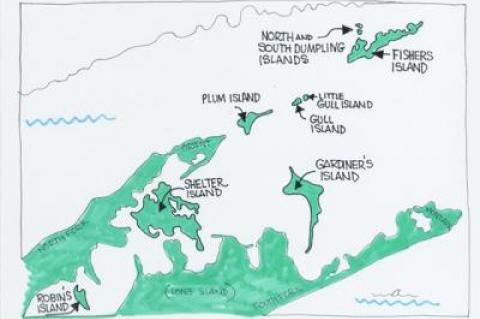 Nature Notes: Long Island Archipelago
Nature Notes: Long Island ArchipelagoLong Island is the biggest island by far in the Long Island archipelago. This archipelago may not be a true archipelago like the Galapagos in the South Pacific off Ecuador or the Channel Islands off Southern California in the middle Pacific or the San Juan Islands off Washington in the northern Pacific. The status of Long Island as an island has long been in doubt, separated as it is from the rest of New York by the East River. The United States Supreme Court — lawyers, mind you, not coastal geologists or geographers — ruled 9 to 0 that Long Island is not an island but part of New York State’s mainland.
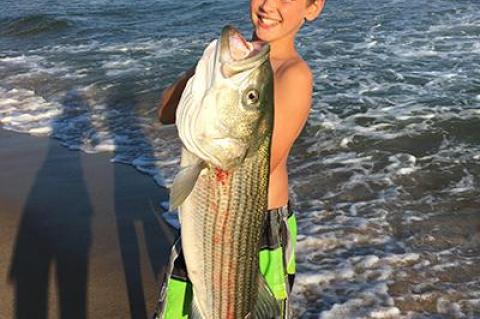 The Silver Assassin
The Silver AssassinBluefish are born mean. A snapper, or juvenile bluefish, will attack just about any lure thrown its way. This silver assassin’s impulsive behavior and voracious appetite make it the perfect target for kids, first-time anglers, and those who just want to have some summer angling fun without committing whole hog to the sport. Even a grizzled surfcaster can enjoy fishing for snappers with an ultralight rod and reel.
Some human domiciles are 1,000 years old or more. Several on Long Island date back to the late 1600s. Most houses, however, have lost their sense of permanence. Fifty years ago, one would never raze a house to build another one unless it was severely storm damaged or ravaged by fire. Nowadays, houses built in the last quarter of the 20th century are falling to new, larger ones right and left. Houses have lost their sense of permanence just as we who live in them have lost our sense of immortality.
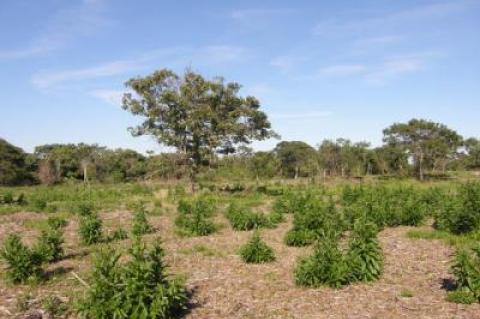 Nature Notes: Montauk Grows Up
Nature Notes: Montauk Grows UpMontauk, in my eyes, is one of the richest places for natural history in the United States. It has grasslands, forests, savannas, freshwater wetlands, tidal wetlands, ponds both permanent and temporary, hills, kettleholes, glacial erratics, cranberry bogs, dunes, ocean beaches, sound beaches, all matter of marine and freshwater fishes, blue-spotted salamanders, and the only ocean coastal bluffs north of the Caribbean Islands. That venerable Long Islander Teddy Roosevelt traveled the world, and he also visited Montauk. He must have loved it. Walt Whitman loved it. I love it.
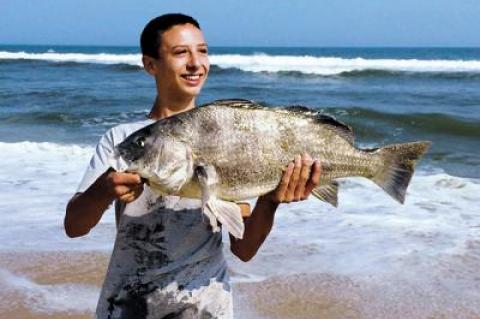 Hooked by Fishing
Hooked by FishingOf course I did this on purpose, I told my wife, showing her the large silver hook dangling from my left ring finger. You think an experienced fisherman like me could accidentally hook himself, I continued, unsuccessfully hiding a smile. She rolled her eyes, called East Hampton Urgent Care in Amagansett, and off we went to free the shiny devil from my person.
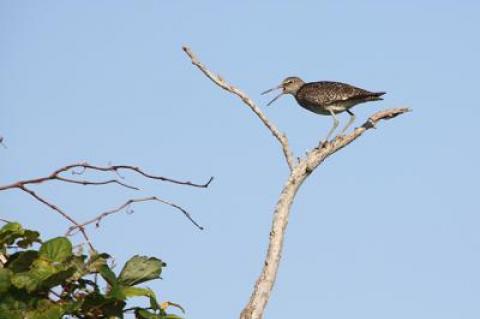 Nature Notes: It’s Getting Hot in Here
Nature Notes: It’s Getting Hot in HereThe dog days of summer are supposed to wait until mid-August, but decided to come in July this year. Ouch! Having said that, the way the climate has been heating up in this decade, come August, the days could get even doggier.
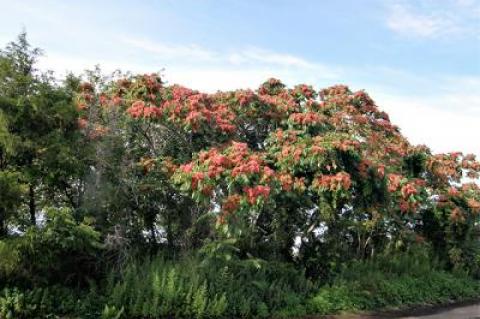 Nature Notes: Tree of Heaven
Nature Notes: Tree of HeavenThere is a very pretty grove of green-leafed trees with bright red-brown flowers and developing fruit on the west end of Long Beach in Noyac, less than 75 feet from the lapping waters of Noyac Bay. On Monday I examined them and found them to be trees of heaven, Ailanthus altissima. I see scores of trees of this species every time I ride along one of the South Fork’s more populated highways. In places Noyac Road is overrun with them, but most of the flowers are much more green than red.
Five traditional boats, tools, and maritime equipment will be for sale on Saturday when the East End Classic Boat Society holds its annual fair from 10 a.m. to 4 p.m. at the Hartjen-Richardson Community Boat Shop at 301 Bluff Road, Amagansett, behind the East Hampton Town Maritime Museum.
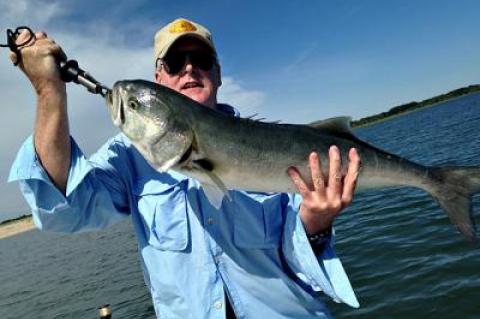 Hey, It’s a Shore Thing
Hey, It’s a Shore ThingOne doesn’t need a boat to fish the East End. There are many productive saltwater and freshwater spots from Montauk to East Hampton where anyone with the right gear, a little local knowledge, and persistence can catch fish for fun or for the table.
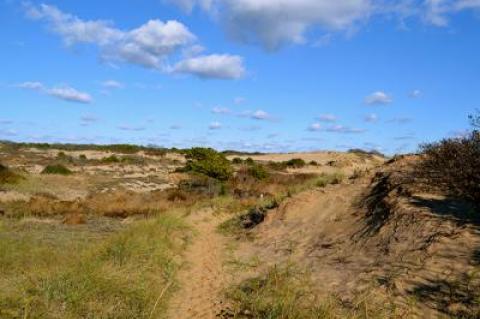 Nature Notes: The Natives Are Restless
Nature Notes: The Natives Are RestlessWe are well into summer. It’s been warm, almost hot. The worst is yet to come. We’ve had just enough rain to make the oaks, hickories, maples, sassafras, and the rest of our native trees as lush as lush can be. I’ve been giving them all a 10 as I drive past and through them, which is unprecedented, but I may becoming dotty or too sentimental.
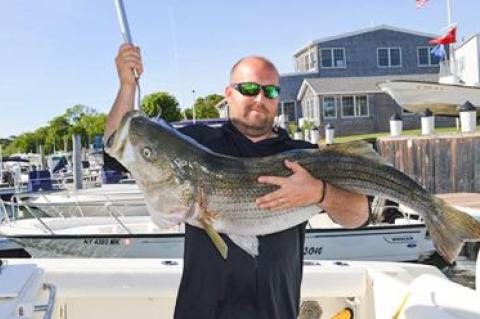 A Big, Toothy Celebrity
A Big, Toothy CelebrityMary Lee is a 16-foot, 3,456-pound great white shark. She’s about the size of a Honda Accord, or an Audi A5, for those who favor European rides. Mary Lee was captured, satellite tagged, and released on Sept. 17, 2012, in the waters surrounding Cape Cod by OCEARCH, a marine research organization that focuses on keystone marine species including great whites.
 Nature Notes: Songs of the Season
Nature Notes: Songs of the SeasonNo two springs or summers are the same. June may continue the string of warmest months since records have been kept. It was also dryer than usual. Do high temperatures and droughts go hand in hand? There used to be a local guru I could call for answer that question, but Long Island’s most longstanding and celebrated weatherman, a farmer and resident of Bridgehampton, Richard Hendrickson, is no longer with us, having passed away earlier in the year.
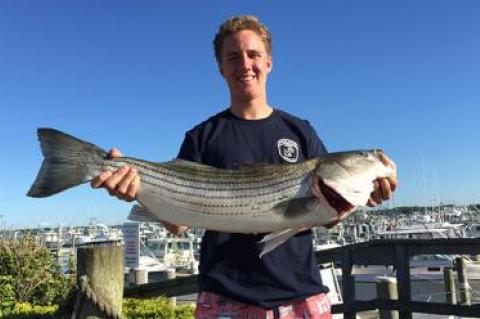 A Fish Tale for the Ages
A Fish Tale for the AgesWet a hook in the bay and you might find a porgy or other commonly caught fish at the end of your line. But lurking below are visitors from afar, waiting to turn your ordinary day of fishing into a fish story of a lifetime.
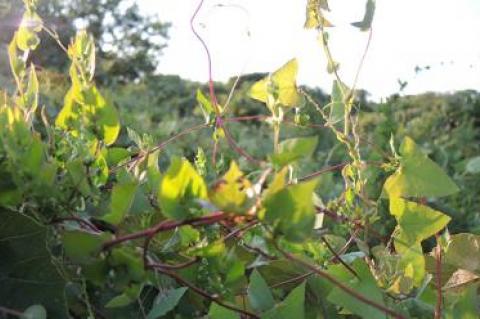 Nature Notes: Welcome, Stranger
Nature Notes: Welcome, StrangerPerhaps during no other time in the history of modern man have so many people from so many countries and territories been on the move to seek new lands in which to live. This is the age of emigration and immigration, born of choice, vocational opportunity, the need to survive, mostly the latter. But it’s not just humans that are on the move. With global warming becoming more and more of a reality, plants and animals of all kinds are extending the ranges, moving from one place to another.
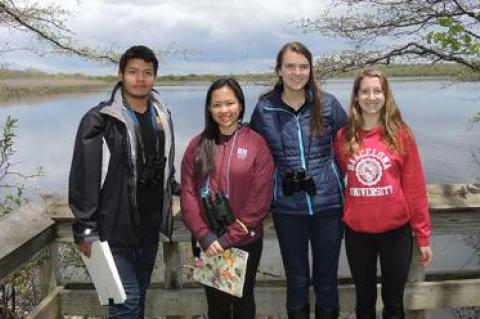 Nature Notes: Superlative Montauk
Nature Notes: Superlative MontaukI’m not a world traveler, but I’ve been around. If I had to name my 10 favorite places of the thousands I’ve spent time in, Montauk would be very close to the top of the list.
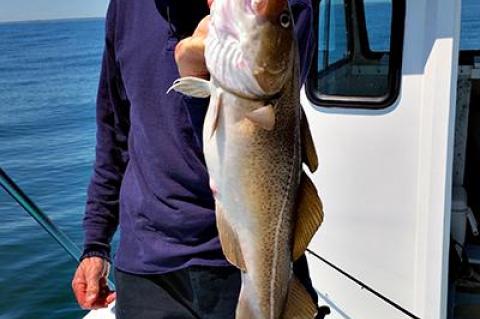 Ghosts of Gardiner’s Point
Ghosts of Gardiner’s PointThis time of year large striped bass take temporary residence in the rip that forms between Bostwick Point at the northern tip of Gardiner’s Island and Gardiner’s Point Island, where the crumbling remains of Fort Tyler, known locally as the Ruins, stands today.
Shucks, only 12 more days before the days begin getting shorter and the nights longer. You might say that’s the zenith of activity for each new year. After that things start going downhill.

